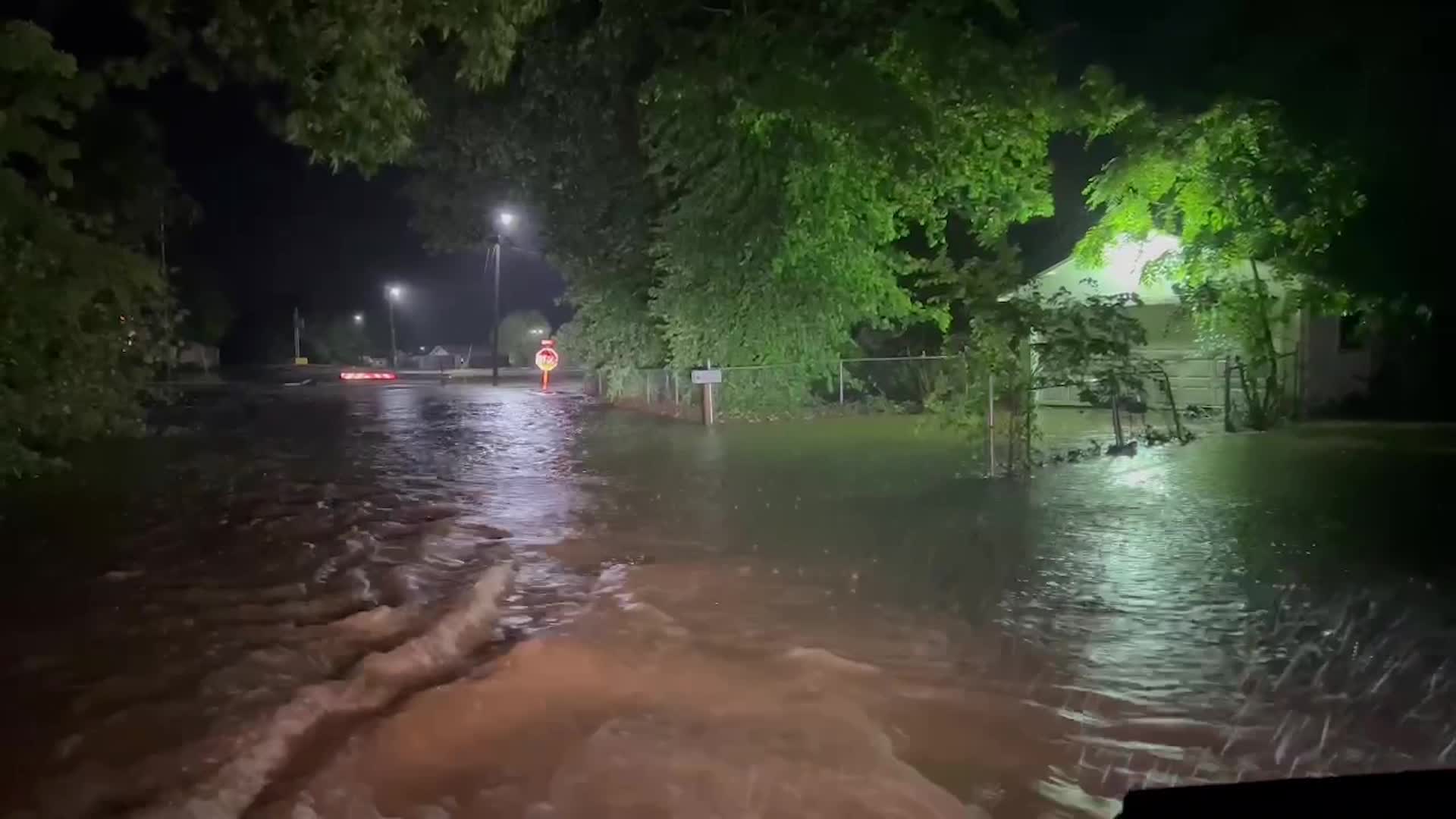Responding To A Flash Flood Emergency: Survival Tips And Actions

Table of Contents
Understanding Flash Flood Warnings and Alerts
Understanding the difference between weather alerts is paramount in preparing for a flash flood. A flash flood watch means conditions are favorable for flash flooding to develop. Stay informed and be prepared to take action. A flash flood warning, however, indicates that flash flooding is already occurring or is imminent. Immediate action is critical. Finally, a flash flood advisory suggests that flash flooding is possible. While not as urgent as a warning, it still warrants attention and caution.
Reliable sources for receiving timely alerts are crucial. Utilize multiple sources for the most comprehensive coverage:
- Download weather apps on your smartphone, such as AccuWeather, The Weather Channel, or similar applications that provide real-time alerts and forecasts.
- Sign up for emergency alerts from your local government and the National Weather Service (NWS). Many areas offer text or email-based alert systems.
- Monitor weather reports regularly, especially during periods of heavy rainfall or thunderstorms. Local news channels and the National Oceanic and Atmospheric Administration (NOAA) website are excellent resources.
Immediate action upon receiving a warning is non-negotiable. Don't wait for the flood to arrive; prepare and evacuate if necessary.
Immediate Actions During a Flash Flood Emergency
Seeking Higher Ground
The most critical action during a flash flood emergency is to seek higher ground immediately if instructed to evacuate. Evacuation orders should never be ignored. Knowing your evacuation routes before a flash flood strikes is essential. Identify multiple escape routes and plan escape strategies for various scenarios.
- Move to higher ground, preferably a multi-story building or a designated evacuation center.
- Avoid low-lying areas, canyons, washes, and areas near rivers and streams, as these are prone to rapid flooding.
- Do not attempt to drive through floodwaters. This is one of the most frequent causes of flash flood fatalities.
Protecting Yourself and Your Property
While evacuating is the priority, securing your home and belongings can minimize damage.
- Secure loose objects around your home that could be swept away by floodwaters. This includes outdoor furniture, trash cans, and anything else that could become dangerous projectiles.
- Turn off electricity and gas if it's safe to do so. This will reduce the risk of electrocution and gas explosions.
- Move valuables to higher floors. If you have time, move important documents, electronics, and other irreplaceable items to a safe, elevated location.
Take these additional precautions:
- Bring pets indoors. They are vulnerable during flash floods.
- Gather essential emergency supplies, including a first-aid kit, non-perishable food, bottled water, flashlights, and a battery-powered radio.
- If trapped in a vehicle, get out immediately and move to higher ground. Your vehicle could be swept away even in seemingly shallow water.
Driving Safety During Flash Floods
Driving during a flash flood is extremely dangerous and should be avoided at all costs. Floodwaters can be deceptively powerful; even seemingly shallow water (as little as 6 inches) can knock you off your feet, and 2 feet of rushing water can sweep away most vehicles.
- Never drive through flooded areas. Turn around and find an alternate route. Remember the phrase: "Turn around, don't drown."
- If your vehicle stalls, get out immediately and move to higher ground. Do not try to restart your vehicle; it could be electrically compromised.
Post-Flash Flood Actions and Recovery
Once the immediate danger has passed, there are still crucial steps to take for recovery.
- Assess the damage to your property and report any injuries to emergency services.
- Contact your insurance company to begin the claims process as soon as possible. Gather evidence (photos, videos) documenting the damage.
- Follow guidelines for cleaning up flood damage safely, being aware of potential hazards like downed power lines and contaminated water.
Remember these additional considerations:
- Be aware of potential hazards like downed power lines and contaminated water. Avoid contact with floodwater, which can contain sewage, chemicals, and other harmful substances.
- Avoid contact with floodwater due to potential health risks.
- Seek professional help for significant structural damage to your home or business.
Contact your local authorities and relief organizations for assistance if needed. They can provide resources and support for recovery efforts.
Conclusion
Immediate action is crucial in a flash flood emergency. Knowing what to do before, during, and after a flash flood significantly increases your chances of survival and minimizes property damage. Preparation and awareness are key in mitigating the risks associated with flash floods.
Be prepared for the next flash flood emergency. Develop a family evacuation plan, assemble an emergency kit, and stay informed about weather alerts through reliable sources. Regularly review your flash flood preparedness plan and ensure everyone in your household understands the procedures. Your life may depend on it.

Featured Posts
-
 As Monaco La Composition De L Equipe Contre Nice
May 26, 2025
As Monaco La Composition De L Equipe Contre Nice
May 26, 2025 -
 Chinas Zheng Qinwen Triumphs Italian Open Semifinal Berth After Sabalenka Upset
May 26, 2025
Chinas Zheng Qinwen Triumphs Italian Open Semifinal Berth After Sabalenka Upset
May 26, 2025 -
 Iptv Illegal Rtbf Et Rtl Belgium Lancent Une Offensive Contre Le Piratage
May 26, 2025
Iptv Illegal Rtbf Et Rtl Belgium Lancent Une Offensive Contre Le Piratage
May 26, 2025 -
 Finding The Best Shrimp 5 Hudson Valley Restaurants
May 26, 2025
Finding The Best Shrimp 5 Hudson Valley Restaurants
May 26, 2025 -
 Mathieu Van Der Poels Custom Canyon Aeroad At Tirreno Adriatico
May 26, 2025
Mathieu Van Der Poels Custom Canyon Aeroad At Tirreno Adriatico
May 26, 2025
